The Auto-Genocidal Tragedy of US Nuclear Power, Part 3
Bad typo fixed. 0.08 mS/d should be 0.008 mSv/d.
The final act in our tragic story of US nuclear in comic book style. The first two are here and here. The full slide deck is here.
In episode 2, we learned that the Intolerable Harm claim was false. In all the nuclear power plant releases to date, we have failed to see the cancer predicted by LNT. In fact, the only radiation harm to the public we have been able to reliably detect, even in a release as large as Chernobyl, was some childhood thyroid cancer, which could have easily been prevented by controlling the consumption of milk for about 8 weeks. The Intolerable Harm Lie is not only false. It’s a massive hoax.
But this raises a crucially important question: why have we seen so little harm? Why are the LNT predictions in a release off by multiple orders of magnitude? This brings us to the second blessing.
In a nuclear power plant release the dose is spread over weeks and months and years. This slide shows an idealized dose rate profile for someone living in the hardest hit portion of Okuma, the hardest hit town in the Fukushima release, who does not evacuate.
These dose rates are far above background. The cumulative dose from this profile over 40 years is quite large, 812 mSv. If you incurred this dose all at once, as in an atom bomb explosion, you would survive, but you would probably feel quite sick for a week or so. Much worse you would end up with about a 4% chance of contracting mortal cancer, because your DNA repair system was not able to keep up with the damage to your DNA.
LNT does a reasonable job of predicting the cancer rate for the bomb drop case; but, since LNT claims we cannot repair DNA damage, it claims these Okumans will also suffer a 4% increase in cancer, despite the fact that their dose was spread over 40 years. This claim is false.
The peak dose rate is below the 2 mSv/d pre-1950 tolerance rate, well below the dose rate at which we have ever reliably detected cancer even when this dose rate is suffered for decades. The LNT cancer prediction is at least 1400 times too high for this profile. The reason is our remarkable DNA repair system. But this raises the all important question: why do we have a DNA repair system that can handle dose rates 100’s of times higher than average background radiation, dose rates we would never normally experience?
To answer this question, we must delve into a little bit of biology. Our cells are mostly water. When an energetic radioactive particle enters a cell, it transfers a portion of its energy to the cell, mostly by breaking the bonds that hold the water molecule together. This creates chemically active molecules dubbed Reactive Oxygen Species (ROS), such as hydroxide and hydrogen peroxide, powerful chemicals which can disrupt the cell’s chemistry.
By far the most worrisome disruption is damage to our DNA. Misrepaired DNA damage can propagate to the whole body in the form of cancer.
DNA damage can be a Single Strand Break (SSB) which leaves one side of the double helix intact; or a Double Strand Break (DSB), both sides cleaved. SSB’s are astonishingly frequent, but they are repaired almost automatically by the clever chemistry of the double helix. As long as one side is OK, the system has a template, and the repair is quick and accurate. SSB’s are a non-problem.
The problem is Double Strand Breaks(DSB), especially closely spaced DSB’s, known as DDSB’s (Double Double Strand Breaks). In a DSB, the repair system usually does not have a template. But the system is still quite good at handling isolated DSB’s. It will almost always rejoin the broken ends or fail safely, by not repairing the DSB.
If both sides are not rejoined, the cell cannot replicate. It will simply die. This not a cancer problem, and it is a medical problem only when the number of dead cells becomes so large that the immune system is compromised, causing Acute Radiation Sickness(ARS). The dose rate profiles required to produce clinical ARS have never been inflicted on the public in a nuclear power plant release, and almost certainly never will.
The real problem is closely spaced DSB’s. In this situation, the system can end up rejoining the wrong ends, creating a possibly viable mutation, which can lead to cancer. In this context, damage is not harm. Harm (cancer incidence) is related to misrepaired damage.
Radiation damage is far from the biggest problem our DNA faces. We use an oxygen based metabolism. Oxygen is dangerous stuff. Oxygen oxidizes. In our metabolism most O2 ends up as CO2. But about 5% is converted to Reactive Oxygen Species. 5% is a lot, about a billion ROS microbombs per cell per day. These rogue molecules roam around the cell screwing things up.
50,000 of each billion will go after our DNA. The information in our DNA must be preserved. Nature had to come up with a DNA repair system that could handle this onslaught. Otherwise we would not be here.
Average background radiation dose rate is about 0.08 0.008 mSv/d, which would produce at most 0.0004 DSBs/cell day. That’s 25,000 times less than the low end estimate of metabolic DSB’s. If we use a low end metabolic DSB generation rate of 10 DSBs per cell day, and a high end radiation estimate of 0.05 DSB’s per mSv, we would need 200 mSv per day to match the metabolic damage. This is why our bodies can handle dose rates hundreds of times above average background.
What do these cell damage numbers mean for the whole body? To answer that question, we need to look at some exposure data. The problem is that, thanks to our DNA repair system, low dose rate radiation, anything near back ground is such a weak carcinogen, that to reliably observe the effects of radiation we must find or concoct situations where humans or animals have incurred very large doses, both acutely, that is all at once over a short period, and chronically, spread more or less evenly over a period of months and years.
This table gathers together most of the human data we have on very large doses. It deserves careful study. Above the top line, the dose was received acutely, in a day or less. The dose rates range from ~1000 mSv per hour to ~1000 mSv per second. At these extremely high dose rates, we start to see cancer at a total dose of only 100 to 200 mSv, and clinical ARS at around 1000 mSv.
Below the bottom line, the dose rate profiles are far more spread out. As long as the dose rate is below about 20 mSv/d, we have never reliably detected cancer, even if the total dose is 100,000 mSv. In this dose rate range, it pretty much does not matter what the cumulative dose is. However, prolonged exposure at rates that are 50 mSv per day or above, significantly increases the risk of cancer.
These numbers are consistent with a repair system which is capable of keeping up with 20 mSv per day of damage, but not a lot more. They also say the ICRP’s pre-1950 tolerance dose rate of 2 mSv/d is about right. A factor of 10 margin on detectable harm. Finally, these numbers confirm the biology, which says LNT’s assumption that we cannot repair radiation damage is auto-genocidal nonsense.
Here’s the Good News.
You can call this double gift, providential.
You can call it, anthropic.
You can call it, dumb luck.
But what you don’t do is reject it.
By denying the second gift, humanity has rejected the first.
This is an act of auto-genocide.
The news is not all bad. This auto-genocidal tragedy can still be averted. Nuclear’s problems are entirely man made. What is man made can be man unmade. The first step is renouncing LNT, which rejects Nature’s repair gift. This can be done with an Executive Order.
The second step is renouncing the Two Lies. When LNT goes, the Intolerable Harm Lie goes with it. With the Intolerable Harm Lie gone, the transparent Negligible Probability Lie is superfluous. We would be on the road back to Oconee and should-cost nuclear.
Check out We Can Make Nuclear Cheap Again for the complete plan, including a viable replacement for LNT, a replacement that accepts Nature’s second blessing.


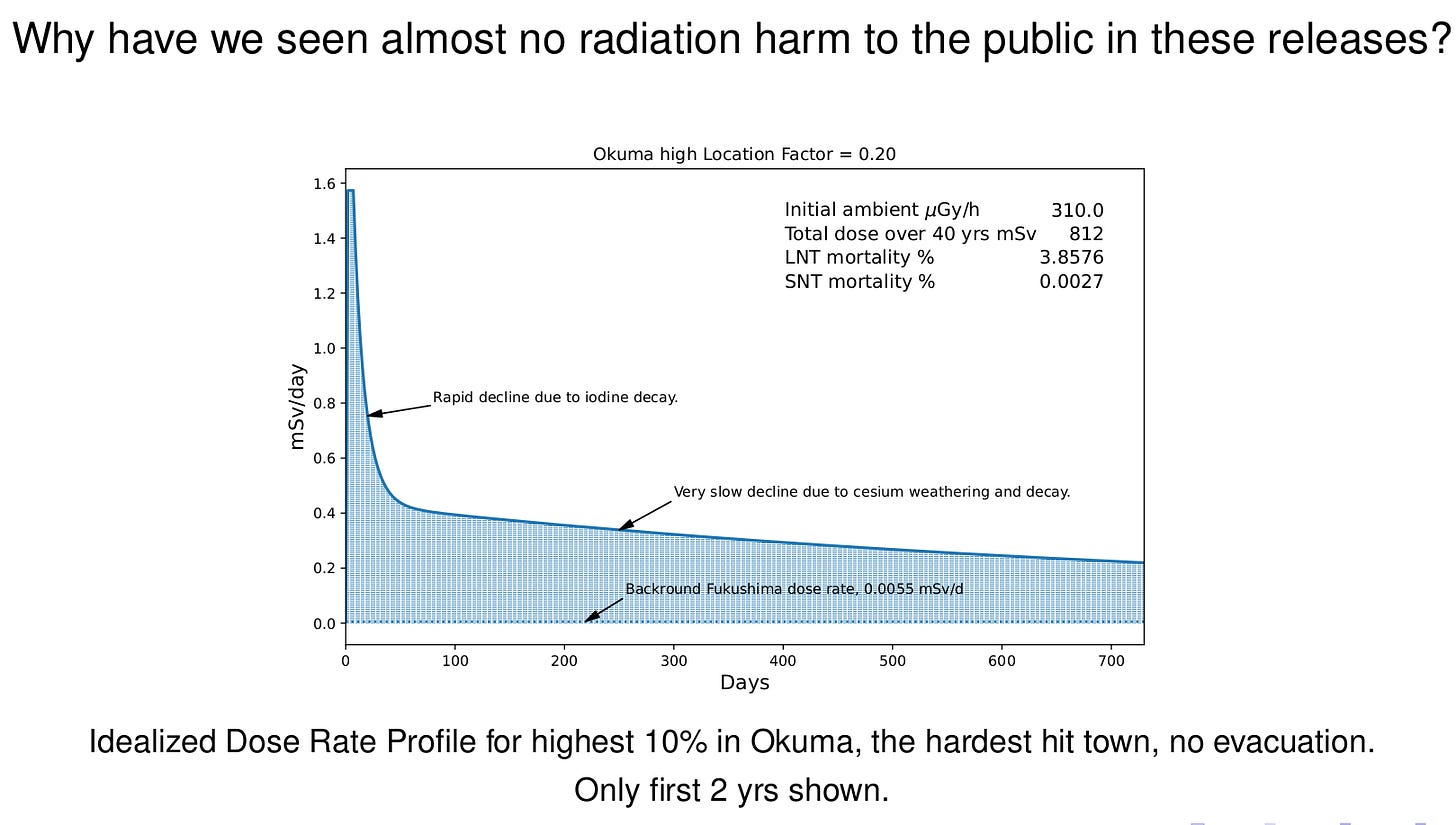
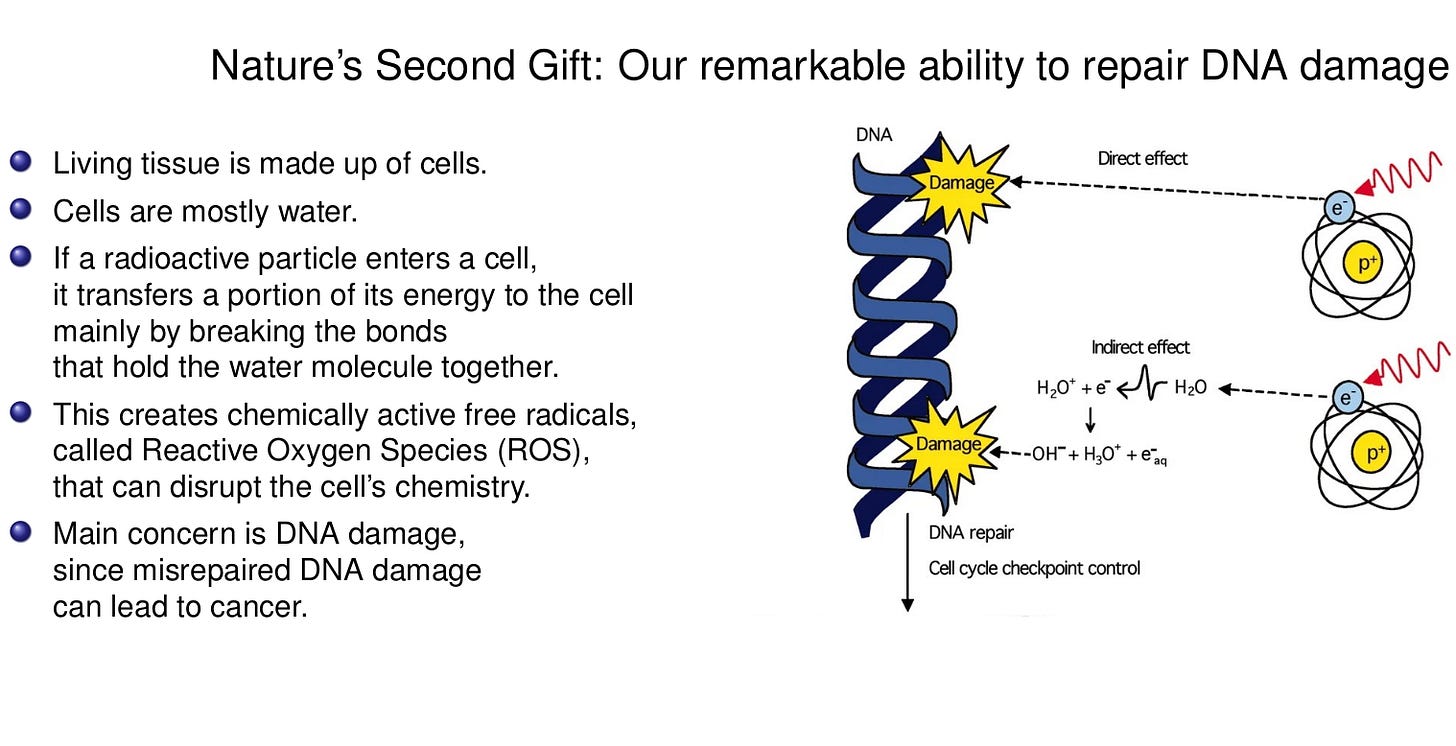
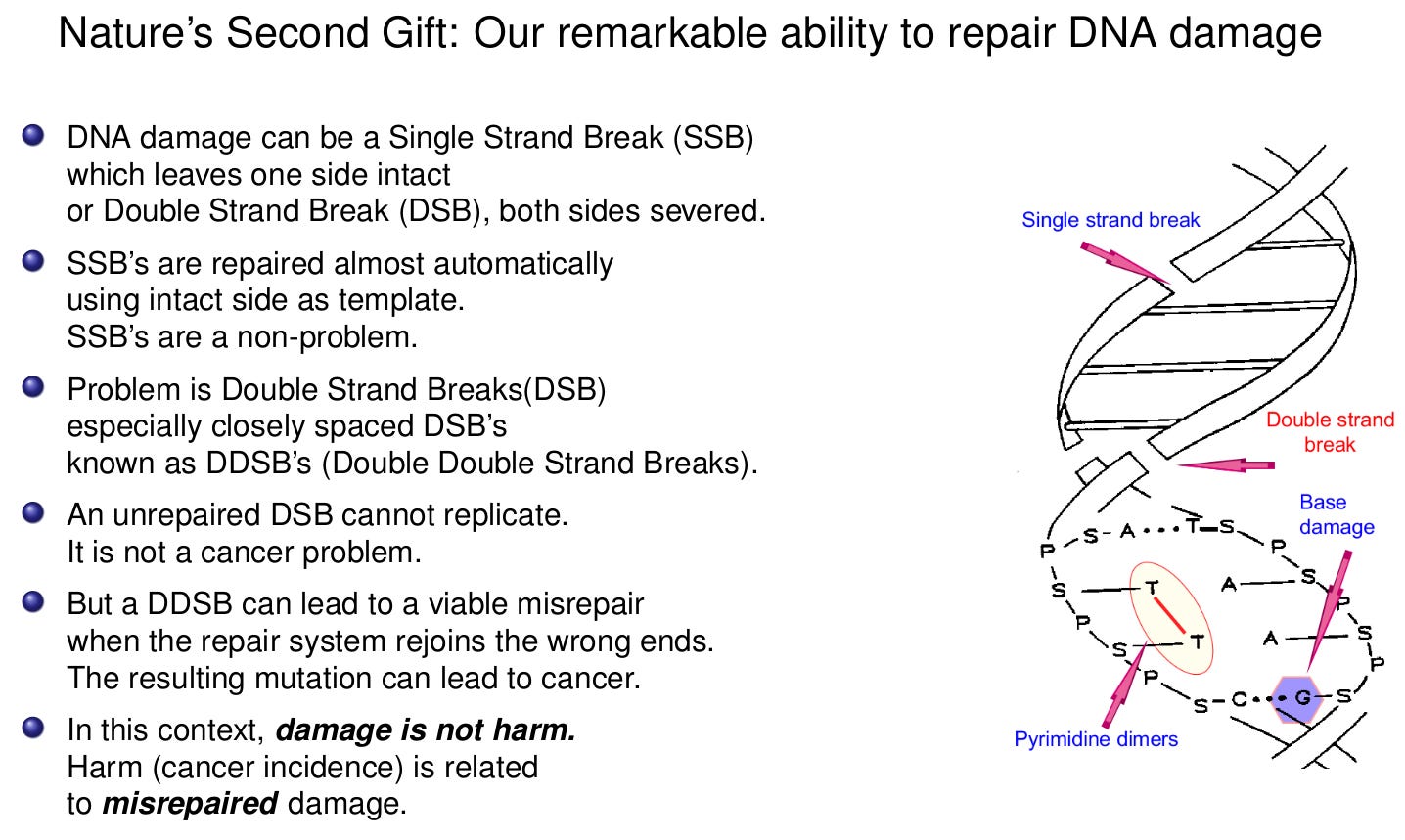
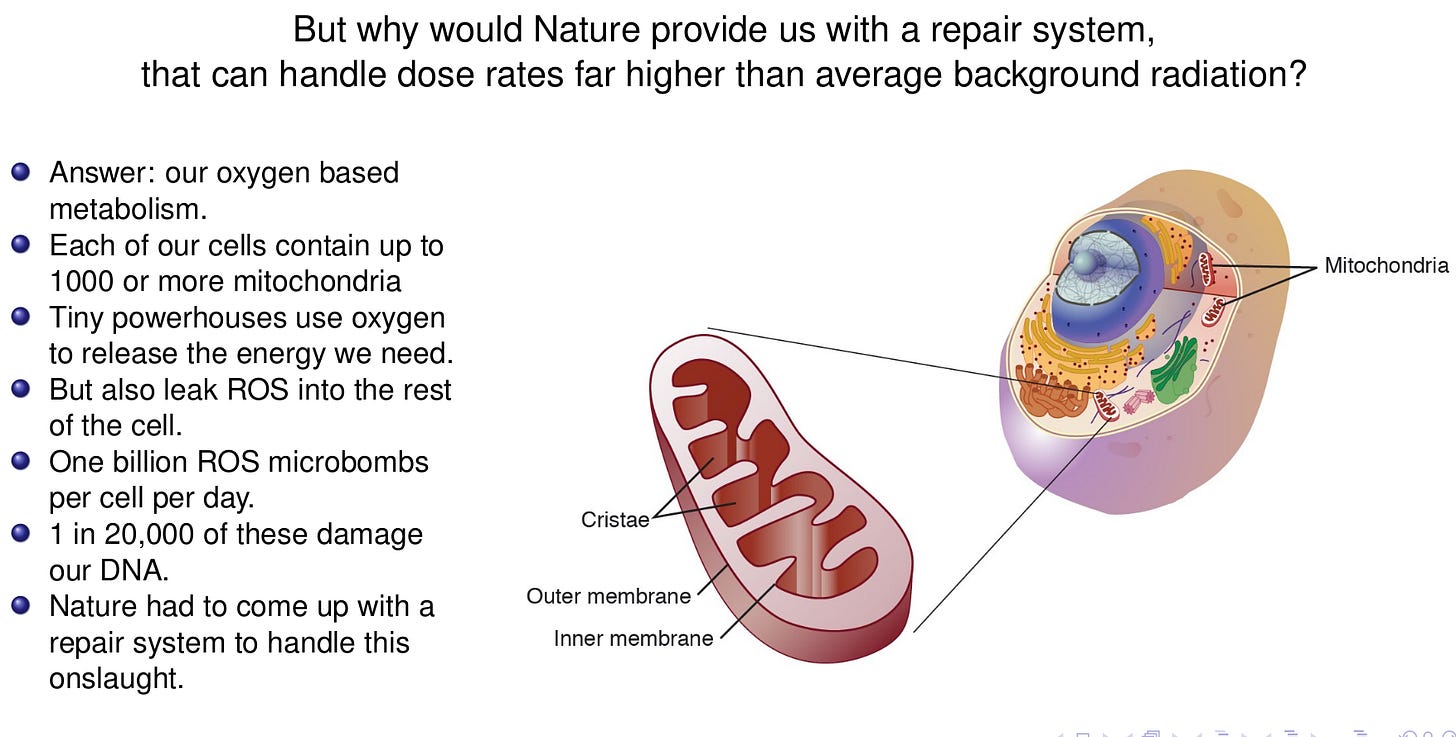
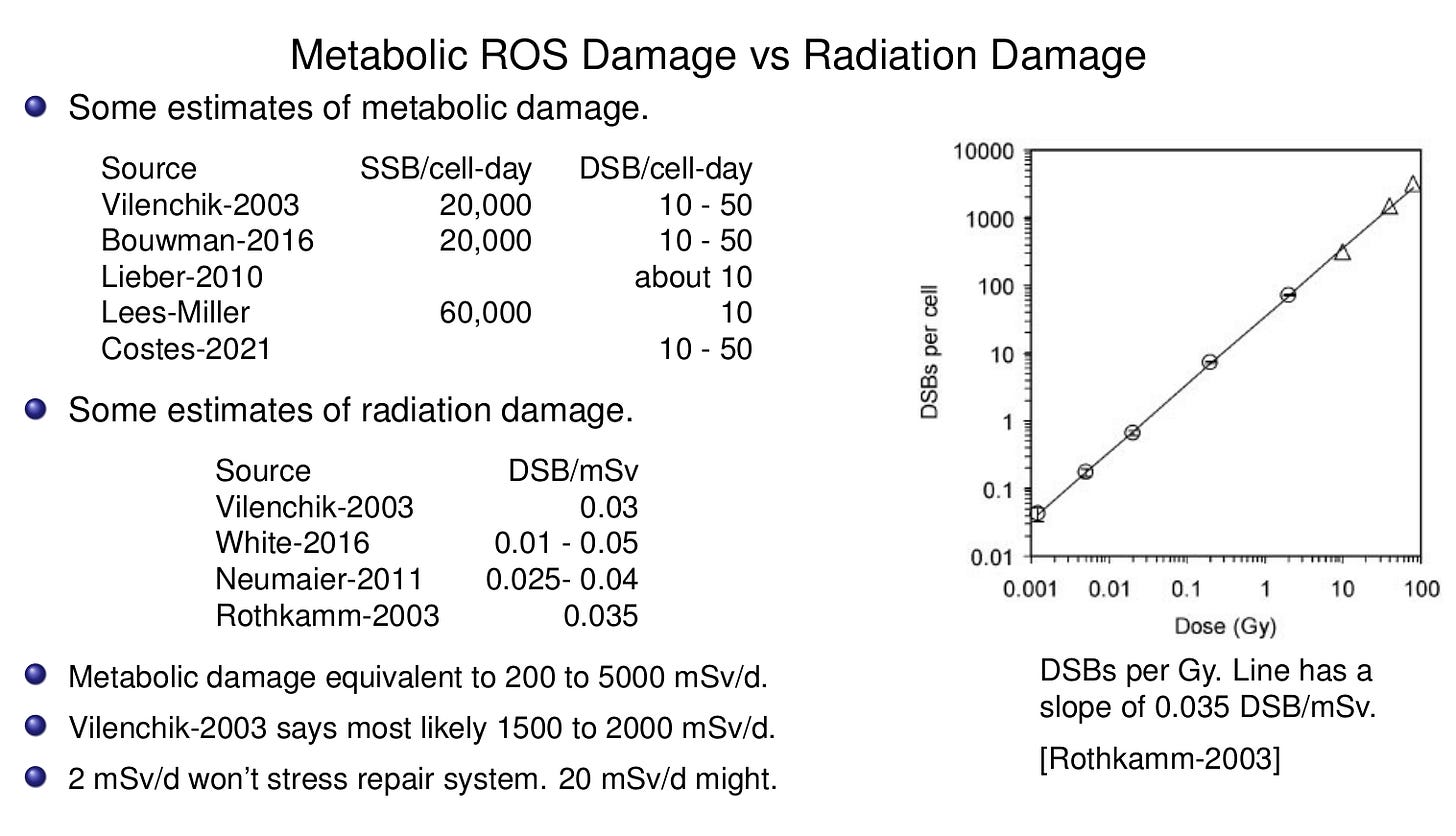
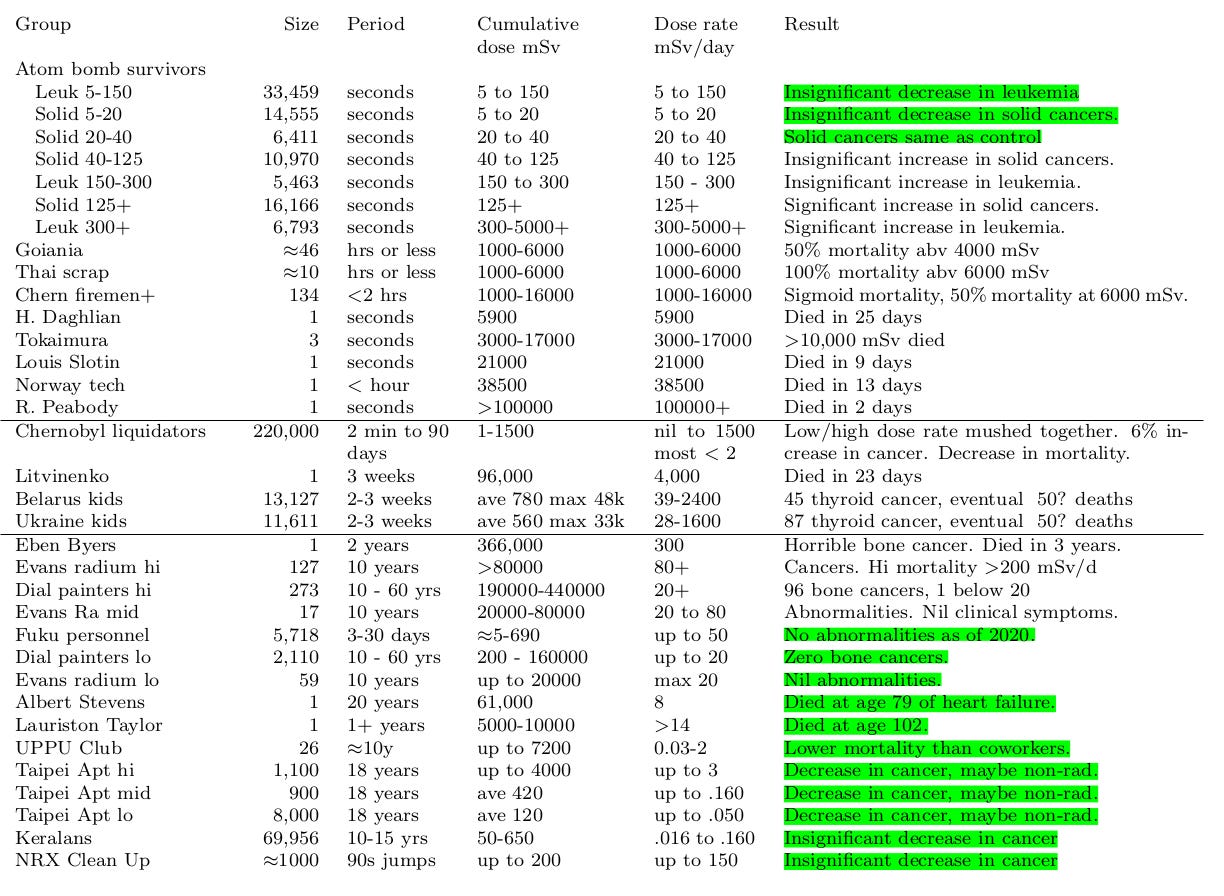
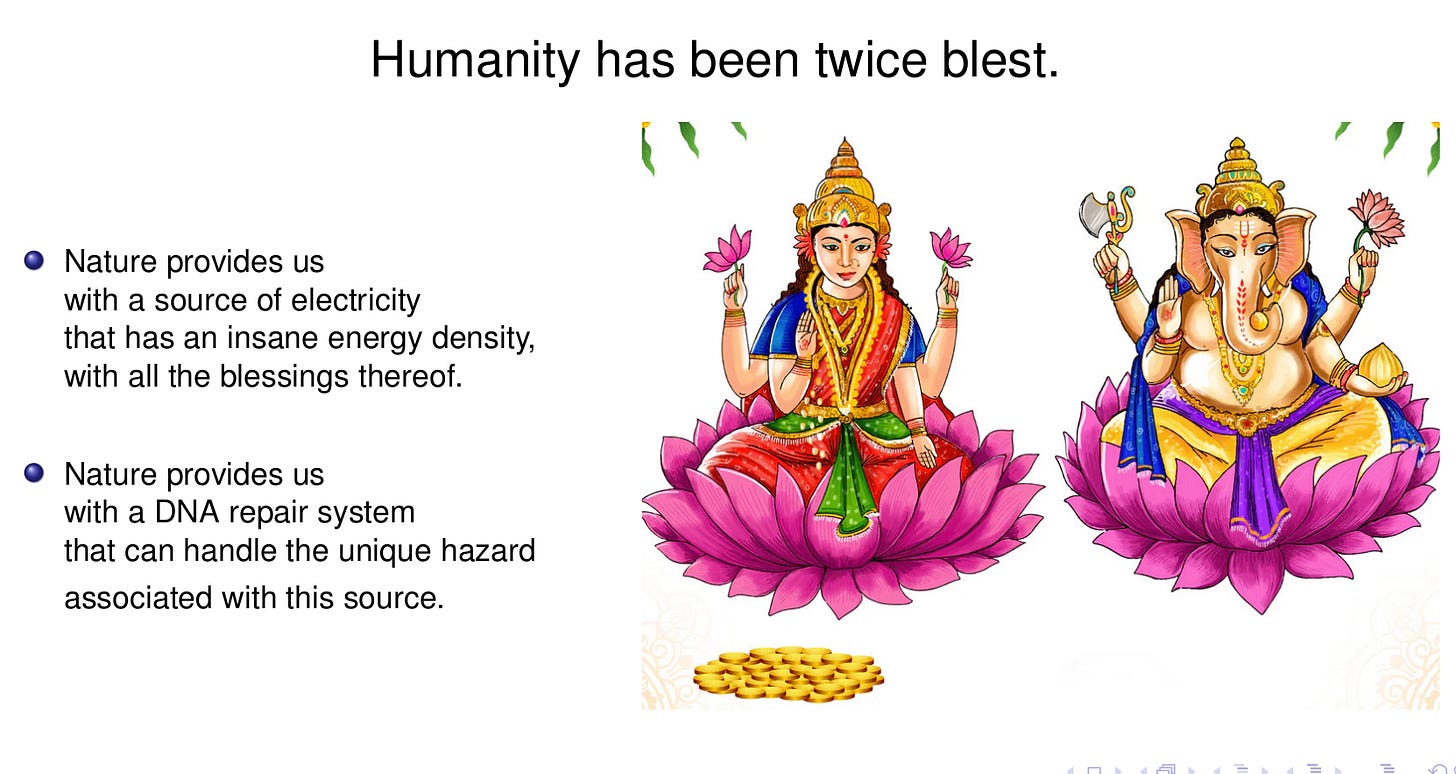
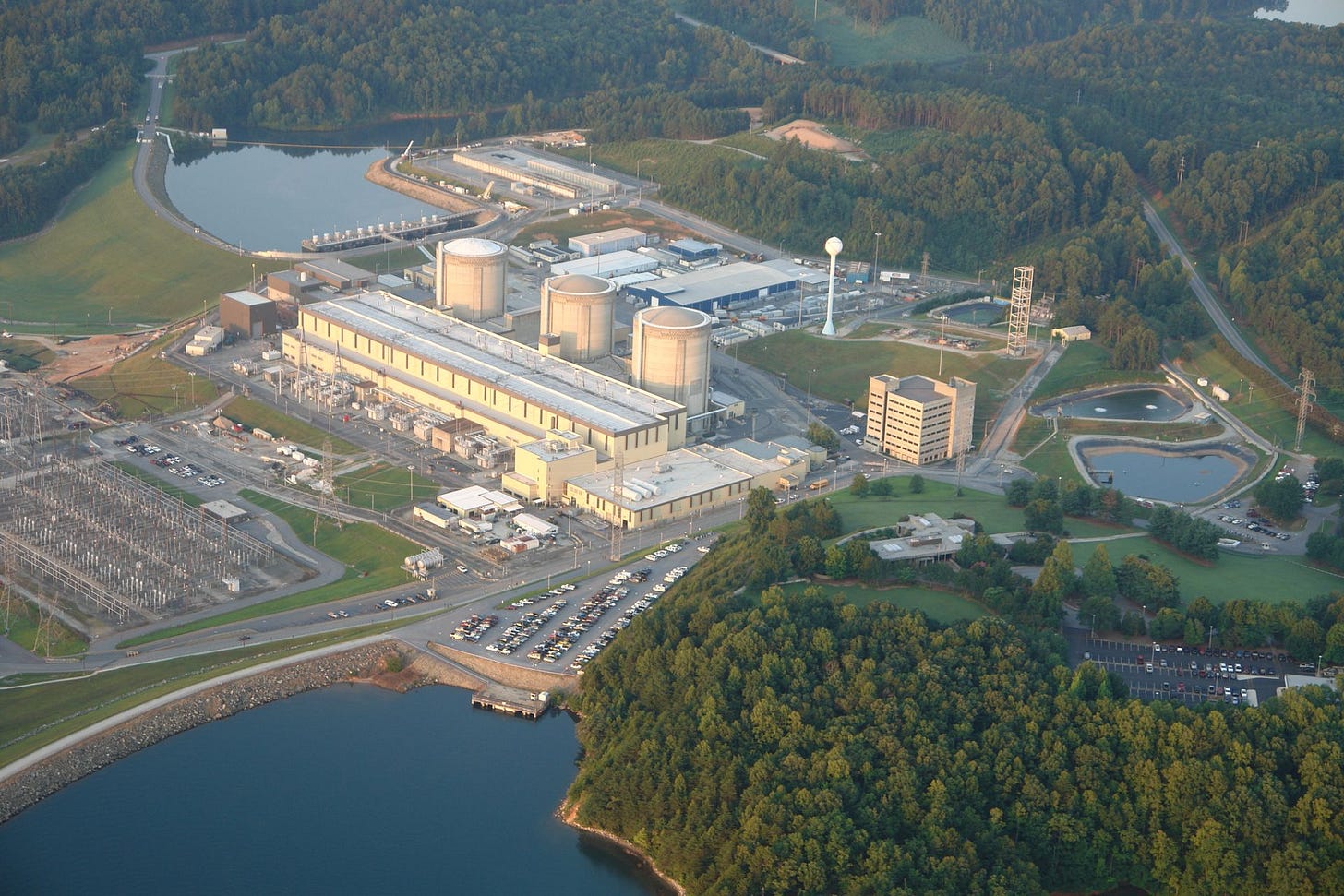
At the risk of repeating myself, simply using the Sievert as a unit of deleterious effect when one has no idea of the effect is a problem. It is likely that at very low dose rates the ROS are buffered and the DNA is spared.